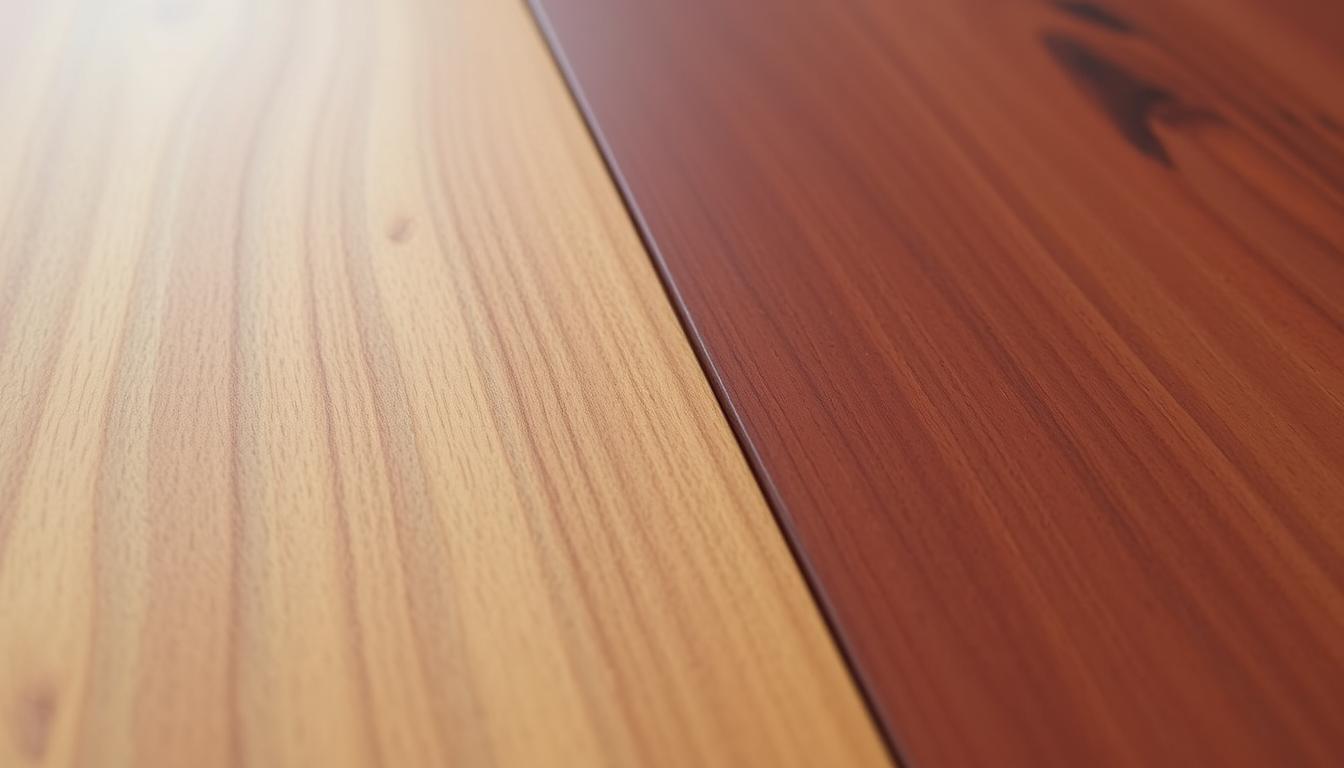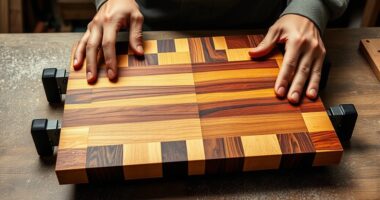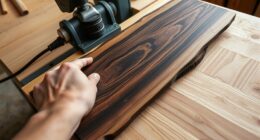Did you know that nearly 80% of professional woodworkers prefer using hardwood for their projects, with cherry wood and mahogany wood being two of the most sought-after choices? These woods are not only aesthetically pleasing but also offer unique functional properties that can significantly impact your woodworking projects. Understanding the hardwood comparison between cherry and mahogany can help you make an informed decision tailored to your specific needs. In this article, we will explore the distinctions in appearance, characteristics, and ideal applications of these popular woodworking materials, guiding you toward the perfect choice for your next endeavor.
Key Takeaways
- Cherry wood and mahogany wood are popular hardwood choices among woodworkers.
- Each wood type features unique properties that affect their aesthetics and functionality.
- Understanding the differences can improve your woodworking projects.
- Color and appearance can significantly influence project designs.
- Durability and workability are vital factors to consider.
Introduction to Hardwood Choices
Choosing the right hardwood can feel overwhelming, given the vast array of options available. Understanding the different types of hardwood is essential for any woodworking project. Each option comes with unique properties that influence your final results, making hardwood selection critical.
Factors such as strength, workability, and durability vary significantly among types of hardwood. It is crucial to evaluate these parameters based on your specific project needs. Whether you prefer the aesthetic qualities of cherry wood or the robust nature of mahogany, the decision can profoundly impact your woodworking materials and overall outcome.
Being well-informed about the characteristics of each wood type leads to better choices. Focus on aspects that matter most to you, such as grain patterns, color variations, and potential applications. This knowledge empowers you to make a sound decision tailored to your project requirements.
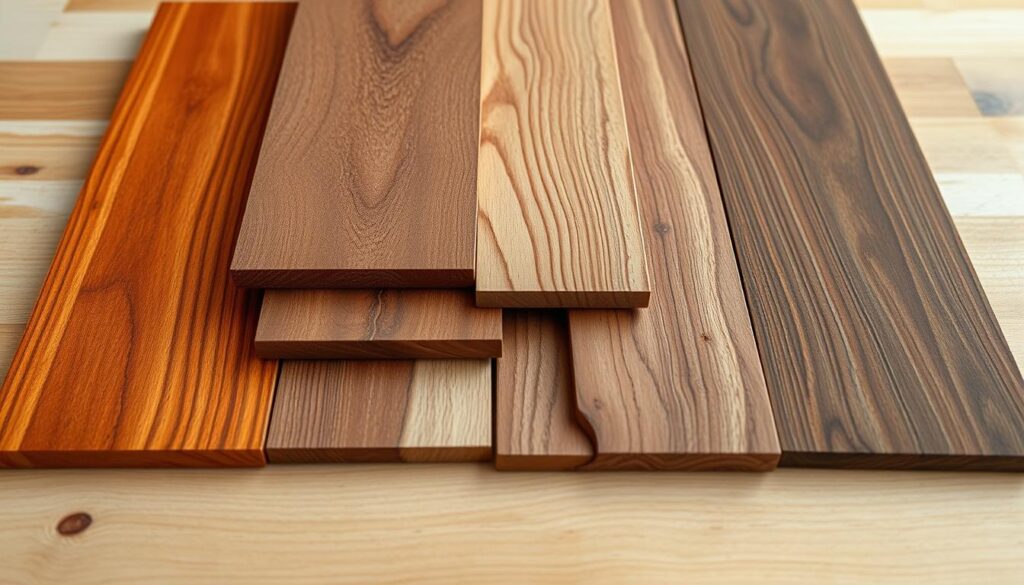
Understanding Cherry Wood
The allure of cherry wood lies in its rich history and unique characteristics. Originating primarily from Prunus species found across North America, this hardwood has become a favorite among woodworkers and furniture makers. You can appreciate its warm, reddish-brown hues and fine, straight grain which are key features that establish the charm of cherry wood properties and make it an excellent choice for various woodworking projects.
Origin and Characteristics of Cherry Wood
Cherry wood characteristics contribute to its popularity. With a Janka hardness rating of 995 lbf, it is durable yet easy to work with, allowing for intricate designs. This medium-density wood weighs approximately 36 lbs/ft³ (580 kg/m³). It boasts a natural luster that enhances over time, highlighting its suitability for furniture and cabinetry.
Uses of Cherry Wood in Woodworking Projects
The versatile uses of cherry wood span across several applications. Not only is it favored in creating fine furniture, but it finds its place in cabinetry, flooring, and even musical instruments due to its appealing aesthetics. Whether you are crafting a dining table or a custom cabinet, cherry wood offers the strength and beauty necessary for high-quality projects.
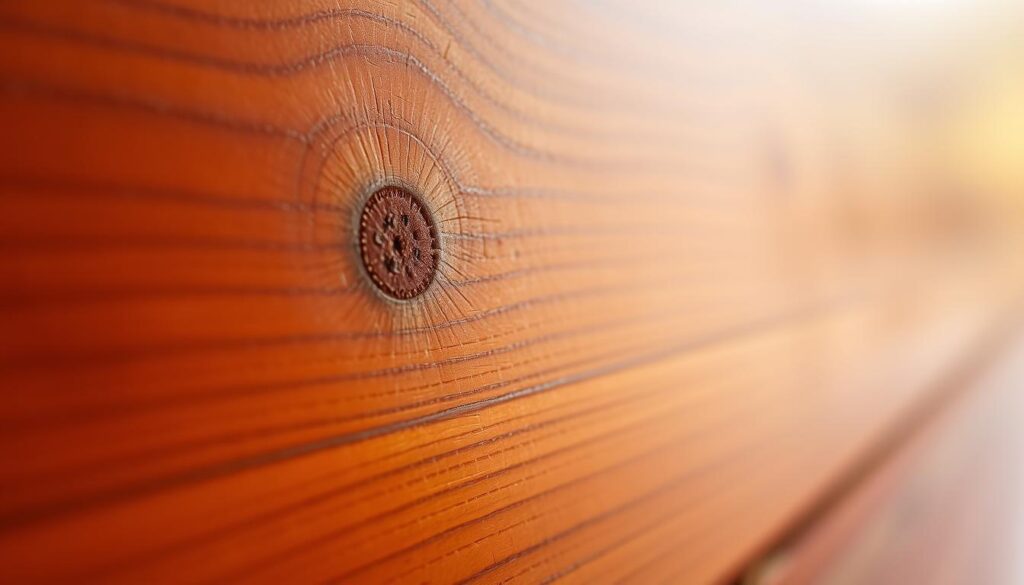
| Property | Description |
|---|---|
| Origin | Primarily sourced from North America |
| Hardness | 995 lbf on the Janka scale |
| Weight | 36 lbs/ft³ (580 kg/m³) |
| Appearance | Warm reddish-brown tones with a fine grain |
| Common Uses | Furniture, cabinetry, flooring, musical instruments |
Exploring Mahogany Wood
When it comes to choosing high-quality hardwoods, mahogany stands out due to its remarkable properties and versatility. This wood is highly regarded for its beautiful appearance and durability, making it an ideal option for various woodworking projects.
Origin and Unique Properties of Mahogany Wood
Mahogany is primarily derived from the Swietenia genus, found in tropical regions such as Central America and the Caribbean. Its mahogany characteristics include a rich reddish-brown color and a fine, straight grain. The natural luster of mahogany wood gives it an appealing aesthetic, ensuring that finished products display elegance. With a hardness range between 800-900 lbf, it exhibits good resistance to wear while remaining relatively easy to work with, a key factor in crafting high-quality items.
Common Applications of Mahogany in Furniture Making
The uses of mahogany wood are extensive, particularly in high-end furniture production. Skilled artisans often select mahogany for crafting luxury furniture pieces, cabinetry, and decorative accents. Additionally, mahogany wood finds its way into boat building and fine musical instruments due to its stability and resistance to moisture. Whether used in traditional or contemporary designs, mahogany brings beauty and functionality to woodworking projects.
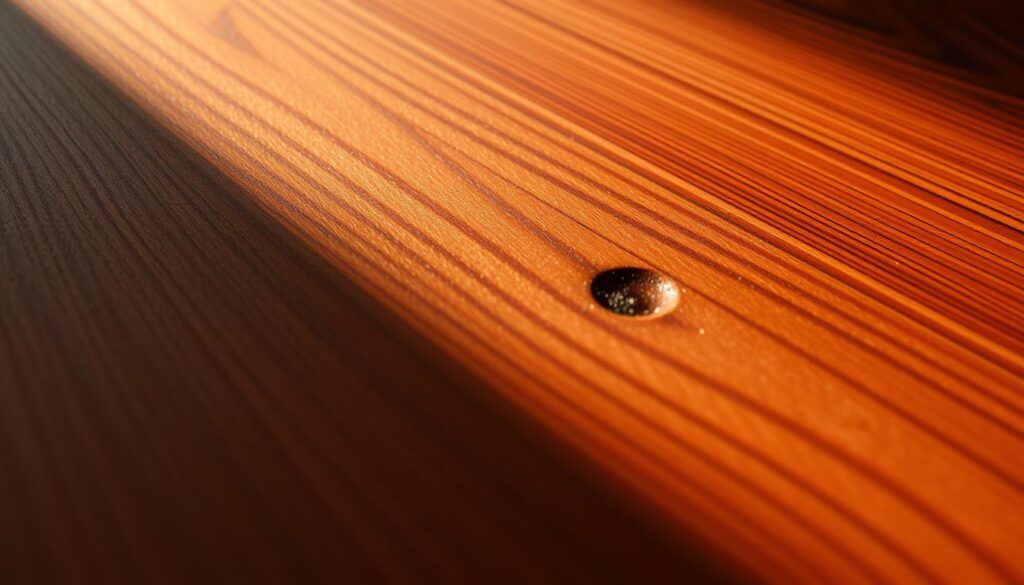
Choosing Cherry Wood vs Mahogany for Woodworking Projects
When it comes to choosing wood types for your woodworking projects, both cherry and mahogany offer unique benefits that cater to different needs. Cherry wood is known for its warm, rich tones and smooth grain, making it a favorite among furniture makers who value aesthetics. Mahogany, on the other hand, boasts a classic appeal with its deep reddish-brown color and durability, lending itself well to high-quality furniture and cabinetry.
The decision between cherry vs mahogany often hinges on factors such as intended use and desired finish. In terms of durability, both options provide substantial resistance against decay and insect damage. Although cherry wood is slightly harder, mahogany still stands up well against wear and tear, which can be advantageous for long-lasting projects.
To assist with your woodworking selection, consider creating a comparison table that outlines the key features of both woods:
| Feature | Cherry Wood | Mahogany Wood |
|---|---|---|
| Color | Warm reddish-brown that darkens over time | Rich reddish-brown with a more uniform color |
| Hardness | Slightly harder | Medium hardness |
| Durability | Moderate resistance to wear | High resistance to decay and insects |
| Workability | Easy to cut, sand, and finish | Also easy to work with, holds detail well |
In summary, your choice between cherry wood and mahogany will greatly depend on the specific requirements of your project along with personal preference for color, grain, and finish. Exploring these aspects will lead you to a more informed decision for your woodworking endeavors.

Appearance Comparison
When choosing between cherry wood and mahogany, wood aesthetics play a significant role. Understanding the visual differences is crucial for making the right decision for your woodworking projects.
Visual Differences Between Cherry and Mahogany
Cherry wood appearance typically features a lighter reddish-brown tone that may deepen and enrich over time, showcasing a beautiful aging process. In contrast, the mahogany color comparison reveals its deeper, dark reddish-brown shade, known for its rich, warm quality. The grain patterns of mahogany tend to be more pronounced and varied, while cherry’s grain is generally straighter and smoother. Each wood type brings a unique charm, impacting the overall look of your finished pieces.
How Color Influences Project Design
The color of wood significantly affects the atmosphere of a project. Cherry’s warm tones can harmonize well with lighter, airy designs, making it suitable for contemporary styles. On the other hand, mahogany’s bold and dramatic hues add depth to traditional or classic aesthetics. Selecting the right wood involves considering how these colors will integrate with your overall design, ensuring that the materials used not only function well but also resonate aesthetically with your intended vision.
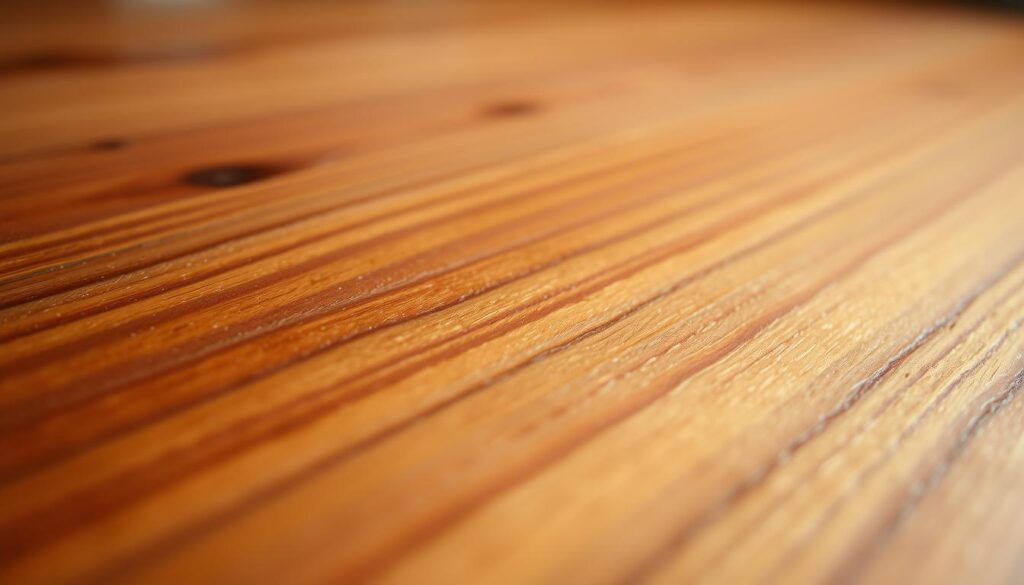
Strength and Hardness Considerations
When selecting wood for your projects, understanding wood hardness is crucial. Cherry wood generally holds a superiority in strength when compared to mahogany. On the Janka hardness scale, cherry scores around 995 lbf, positioning it higher than mahogany, which typically ranges between 800 and 900 lbf. This strength difference plays an important role in determining the suitability of each wood type for specific applications.
The implication of cherry vs mahogany strength directly affects your woodworking experience. Cherry’s higher hardness contributes to its resistance against wear and denting, making it a sound choice for furniture pieces that endure daily use. For cabinetry or items that will face less physical stress, mahogany may still perform adequately while providing a classic aesthetic appeal.
Consider the durability in woodworking projects when making your decision. If you’re leaning toward versatile usage, cherry wood’s robustness may provide you with greater long-term satisfaction. In contrast, mahogany may suffice for decorative purposes where heavy-duty performance is not a primary concern.
| Wood Type | Janka Hardness (lbf) | Strength Rating | Best Use Cases |
|---|---|---|---|
| Cherry | 995 | Higher durability | Furniture, cabinets, flooring |
| Mahogany | 800-900 | Moderate durability | Decorative pieces, cabinetry |
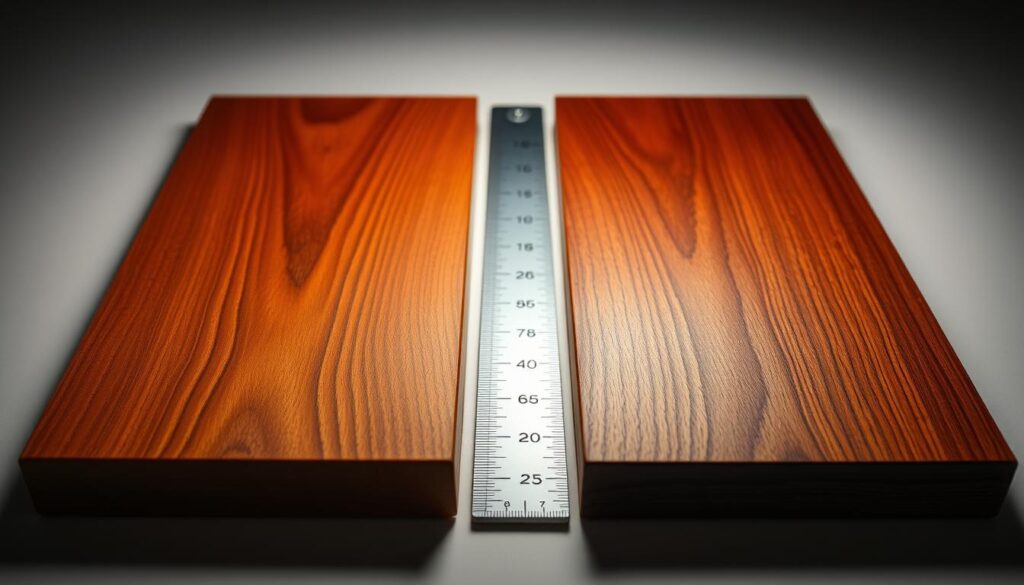
Durability and Longevity of Each Wood Type
When it comes to woodworking projects, both cherry and mahogany stand out for their wood durability. Each wood type has unique characteristics that contribute to its resistance against wear and tear. Understanding these features can help you choose the best option for your needs.
Resistance to Wear and Tear
Cherry wood has a notable resilience to everyday wear, making it a popular choice for furniture and cabinetry. It retains its attractive qualities over time while resisting scratches and dents. On the other hand, mahogany is renowned for its hardness, giving it excellent durability. Its dense structure enables it to withstand both physical impacts and environmental changes, which adds to mahogany longevity in various applications.
Maintenance Requirements for Cherry and Mahogany
To ensure the longevity of your hardwood projects, various maintenance routines apply to each type. The maintenance of cherry wood generally involves periodic cleaning and the application of a protective finish. This not only enhances its beauty but also reinforces its resistance to moisture and dirt. Mahogany, while low in maintenance, benefits from occasional polishing to maintain its luster. Regular care helps prevent wear and keeps both wood types looking stunning throughout their lifespan.
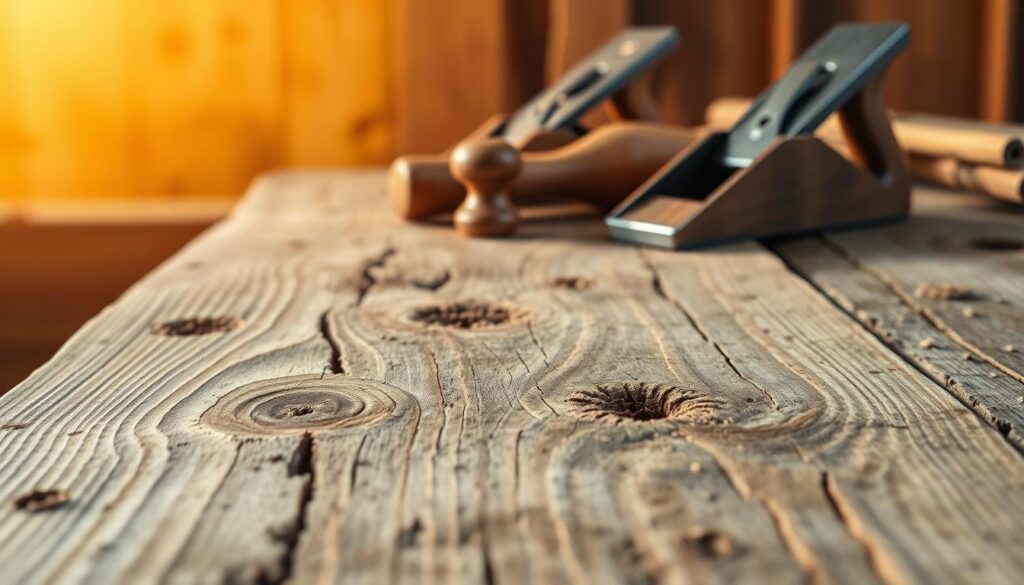
| Wood Type | Resistance to Wear | Maintenance Requirements | Longevity |
|---|---|---|---|
| Cherry | Moderate, resists scratches | Periodic cleaning, protective finish | Good, ages beautifully |
| Mahogany | High, hard and durable | Occasional polishing | Excellent, lasts for generations |
Workability: Which Wood is Easier to Handle?
When considering wood workability, both cherry and mahogany stand out for their ease of handling during projects. Cherry wood often features a fine, straight grain that can make it manageable for various woodworking tasks. The beauty of handling cherry wood lies in its smooth texture, which allows for clean cuts and an attractive finish. Yet, this wood can pose some challenges, particularly the risk of tear-outs when working with intricate designs. Being mindful of your cutting techniques can help mitigate these issues.
On the other hand, working with mahogany offers some advantages in terms of versatility. Its straight grain tends to allow for easier cutting and shaping, making mahogany a preferred choice for many woodworkers. Because of its stability, mahogany is often used in furniture making where detailed craftsmanship is required. Whether you’re a professional or a hobbyist, you will find that both woods deliver excellent results, yet mahogany may provide that extra bit of convenience in various tasks.
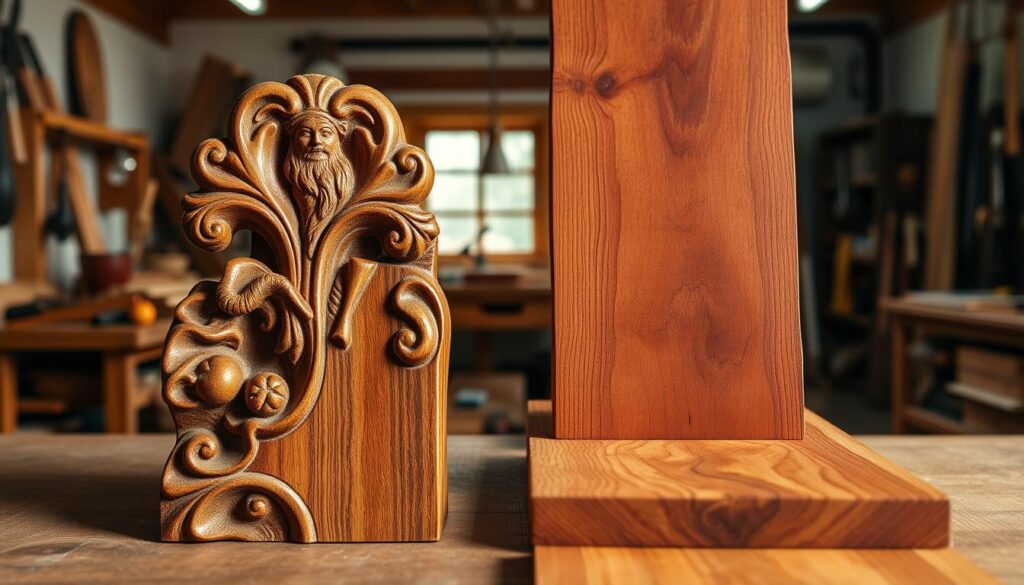
Price and Availability
Understanding the price and availability of cherry wood and mahogany plays a crucial role in your woodworking projects. The cherry wood price often reflects its growing conditions and limited hunting regions. Cherry trees grow more slowly, which can affect market supply and costs. In contrast, mahogany boasts greater availability stemming from its multiple species and broader growing range. Grasping these elements helps you make informed decisions for your work.
Cost Factors for Cherry and Mahogany
Several factors influence the costs associated with cherry and mahogany. Key elements include:
- Market demand and supply variations
- Quality grades of the wood
- Shipping and handling costs
- Nature of wood sourcing, including sustainable practices
Sourcing the Right Wood for Your Projects
When it comes to wood sourcing, finding reputable suppliers is essential. Whether you consider cherry or mahogany, look for information on:
- Supplier credibility and reviews
- Availability of sustainably sourced wood
- Local retailers and online marketplaces
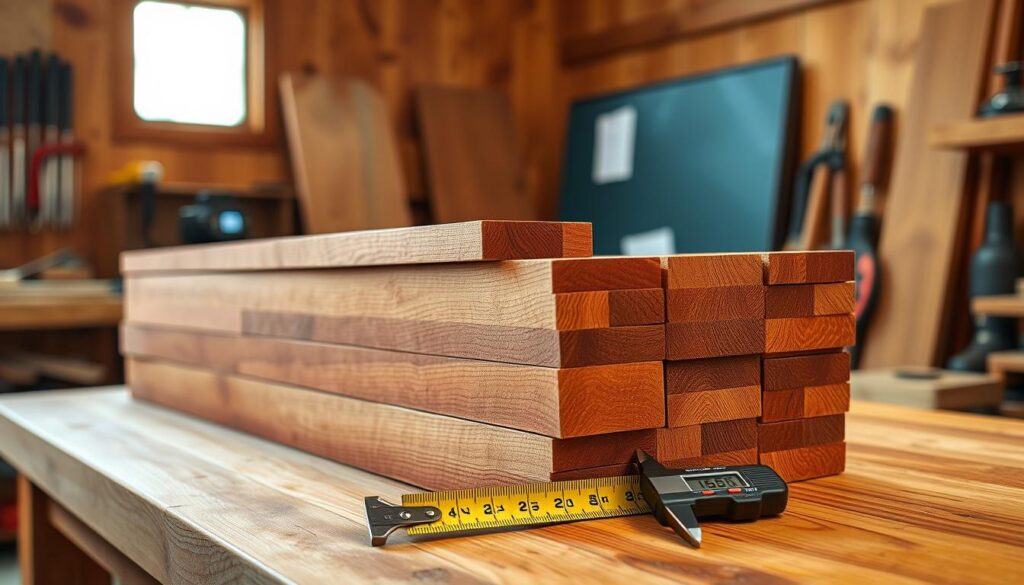
| Wood Type | Typical Price per Board Foot | Availability |
|---|---|---|
| Cherry | Approximately $6 – $10 | Limited due to slow growth |
| Mahogany | Approximately $8 – $15 | More readily available |
Evaluating these aspects can enhance your procurement decisions, whether you favor cherry or mahogany for your next project. Balancing the quality, price, and availability will lead to successful outcomes in your woodworking endeavors.
Best Uses for Cherry Wood and Mahogany
When considering the applications of cherry wood and mahogany, it is essential to match their unique characteristics to your specific needs. Both of these woods offer distinct advantages in various woodworking projects, making them highly sought after by craftsmen and DIY enthusiasts alike.
Which Wood Suits Your Project Needs?
Cherry wood stands out for its warm, rich tones and smooth finish. Its strength and durability make it an excellent choice for furniture that will endure daily use, such as tables and chairs. On the other hand, mahogany is favored for its resistance to the elements, making it ideal for outdoor furniture and cabinetry. Understanding the requirements of your project will help you decide which wood to select.
Furniture Types and Applications
When it comes to mahogany furniture, you will find it commonly used in high-end designs, encompassing everything from cabinets to intricate carvings. The inherent beauty and stability of mahogany enhance the aesthetic appeal of any piece. In contrast, the applications of cherry wood often include items like dining sets, dressers, and other fine millworks, where its beautiful aging process only adds to its charm.
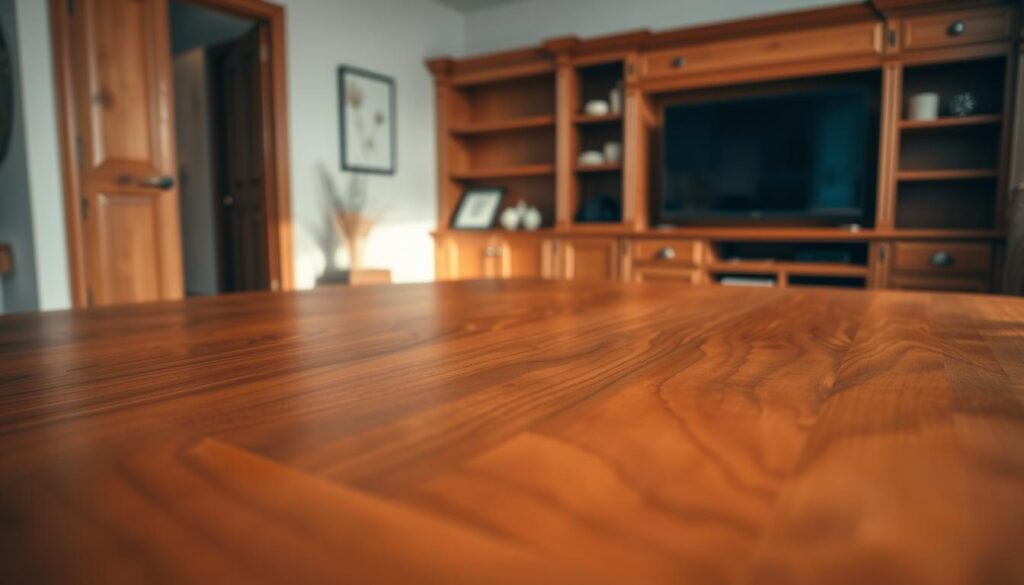
Environmental Impact and Sustainability
The selection of wood for your projects holds significant implications for the environment. Understanding how cherry and mahogany can be sourced sustainably is crucial for conscientious woodworking. Sustainable wood sourcing not only helps in maintaining biodiversity but also lowers the overall environmental impact of wood. Many suppliers today are adopting eco-friendly practices, allowing you to choose materials that align with your values.
Are Cherry and Mahogany Sustainably Sourced?
Cherry and mahogany woods can be sourced sustainably, depending largely on their origin. Companies committed to responsible forestry practices ensure that these woods are harvested in ways that preserve ecosystems. It is important to ask suppliers about their sourcing methods and confirm that they comply with regulations promoting cherry mahogany sustainability. By choosing certified wood, you contribute to forest conservation and responsible land management.
Impact of Wood Selection on the Environment
The environmental impact of wood extends beyond just sourcing. Every piece of wood you select impacts forests, wildlife, and the climate. Sustainable choices in wood selection help mitigate deforestation, which directly benefits our planet. When you opt for responsibly harvested cherry or mahogany, you participate in efforts to reduce habitat loss and support a healthier environment. Your selections matter, as they influence the wider ecosystem through every woodworking project you undertake.

Decision-Making Process for Your Wood Projects
When embarking on woodworking projects, a structured decision-making process is essential. Begin with a clear understanding of your project’s requirements. Consider the type of project you’re engaging in, whether it’s a furniture piece, cabinet, or decorative item. This initial step is critical in wood project planning.
Next, take the time to evaluate the specific characteristics of cherry and mahogany. Each wood type has distinct properties that may affect your final product’s aesthetics and functionality. Choosing the right wood depends on the desired look and feel of your project. For example, cherry offers a warm, rich color that deepens over time, while mahogany boasts a unique reddish-brown hue that is both elegant and durable.
Incorporate the following factors into your decision-making woodworking process:
- Budget: Determine how much you can allocate for wood purchases. Pricing can significantly influence your choice.
- Availability: Research local suppliers for both cherry and mahogany. This includes considering sustainability practices to ensure you’re making environmentally responsible choices.
- Workability: Assess how easy it will be to work with each type of wood. Your skill level may dictate which wood is more suitable for your project.
- Purpose: Clarify the intended use of the finished piece. Will it endure wear and tear, or serve primarily as a decorative element?
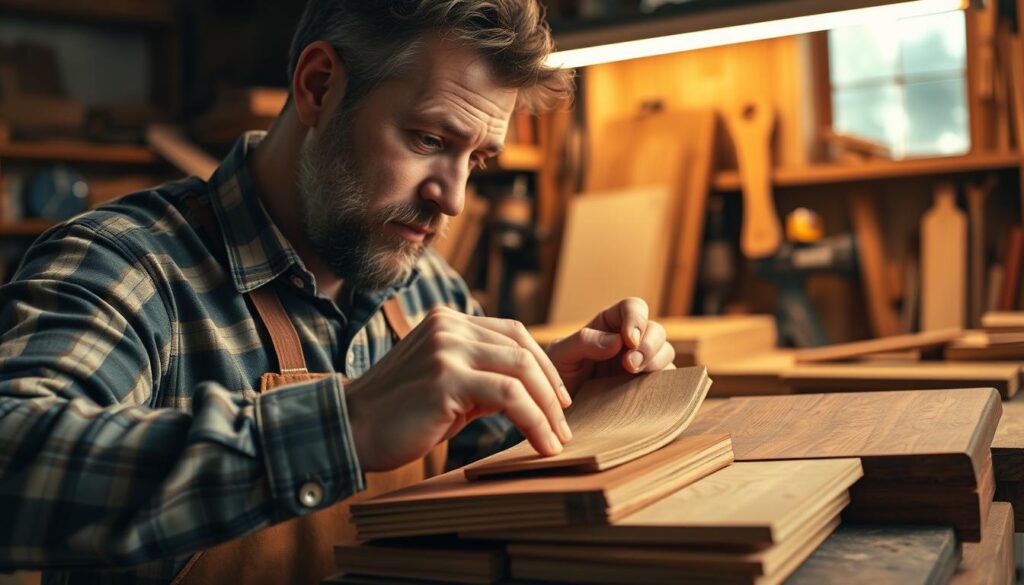
By weighing these considerations, you can confidently navigate the decision-making process for your wood projects. Each step is designed to help you select between cherry and mahogany, ultimately leading to a successful woodworking experience that satisfies your creative vision.
Conclusion
In your journey through the world of woodworking, the comparison of cherry vs mahogany reveals two exceptional hardwoods, each with unique attributes. Whether you’re drawn to the warm hues of cherry or the rich tones of mahogany, understanding their characteristics will help you make an informed decision.
Your choice ultimately hinges on what you value most for your project: aesthetic appeal, budget constraints, or specific applications. Both cherry and mahogany offer durability and beauty that can elevate your craftsmanship. Reflect on your project needs and consider these factors as you decide on the best wood choice.
As you wrap up this exploration, remember that making a careful selection between these woods will not only enhance the overall appearance but also ensure that your woodworking efforts yield lasting results. A thoughtful approach to your materials will lead you to a successful final product.
